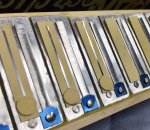Granitz
Member
- Joined
- Aug 21, 2017
- Messages
- 31
- Reaction score
- 1
Greetings! I thought Id share this project in progress. I found this 1960s Pancordion Baton after a several year hunt and am thoroughly enjoying working on it and playing it. Also, I made two new reed blocks for it and installed Special Bombate reeds I stole off eBay. Its not finished yet, but a real treat to play {}
This is a restaurant I play at every Friday night in Atlanta, so there is some background noise. Nonetheless, a really fun gig. Hope you enjoy.
This is a restaurant I play at every Friday night in Atlanta, so there is some background noise. Nonetheless, a really fun gig. Hope you enjoy.

